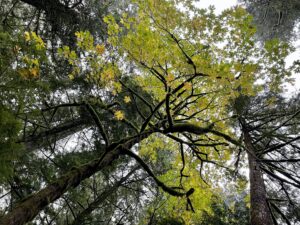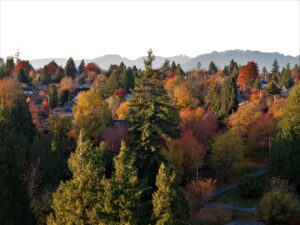by Ross Thrasher
Highlights of an Interview by Mary Kean with Wildland Fire Ecologist, Bob Gray in the GTEC Reader (Sept. 2023)
Since the release of the Filmon Report, a B.C. royal commission in response to the Okanagan fires of 2003, the extent of wildfires in this province and elsewhere has grown exponentially. For that reason the scale of fuel treatments, e.g. forest thinning and prescribed burns, recommended in the report has become totally inadequate. Moreover the current provincial funding programs are small and inflexible. A more holistic, scaled-up approach is required today, with a proactive, preventative focus rather than just reacting to wildfires as they flare up.

In today’s drier conditions, mega wildfires are posing greater threats to urban areas. They burn hotter and move faster. The two-kilometer buffer zone in the Filmon Report allows only minutes for urban-dwellers to evacuate. The area of fuel treatment in the wildland-urban interface needs to be expanded to 10 km. or more, depending on the size of the community and its egress routes.

From a government perspective, the task of fire suppression is expensive and dangerous, but the additional costs of replacing infrastructure and attending to the ongoing health impacts are many times higher. A more integrated preventive approach is an urgent priority from a budget standpoint.
Indigenous peoples have been wise stewards of the forest for many centuries. Indigenous practices of forest thinning and prescribed burning should be emulated.
A national firefighting force should be established not just for fire suppression, but also for year-round field work, training and liaison with local communities, as well as the implementation of preventative approaches. Wildfire mitigation requires stable funding and coherent planning.
Read or listen to the entire interview with Bob Gray in the GTEC Reader, September 2023 issue.
See what else we have in the GTEC Blog! Read articles on climate change, sustainability, education, and more!

